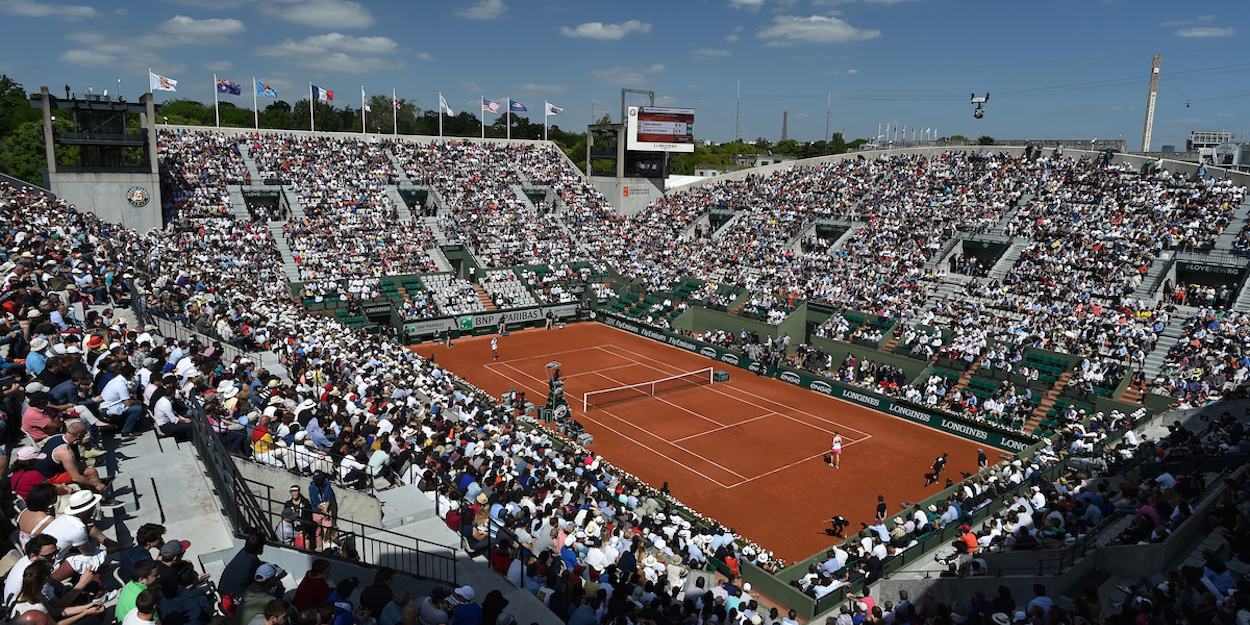
French Open lights up as another tradition dies
A roof over Court Philippe-Chatrier will not be the only innovation spectators will find at this year’s French Open, says Stephen Towers
Traditionalists will no doubt despair, but another of the great tennis rituals will pass into history at the French Open this year. As well as the retractable roof over Court Philippe-Chatrier, lights have been installed on the four main show courts at Roland Garros and will be used to enable matches to be completed. Every other court at the site will be equipped with floodlighting next year, meaning that darkness will no longer be a reason for matches not finishing.
The tournament will not feel the same without at least two or three matches being played late into the evening as darkness closes in, the lights on the scoreboards glow brightly, players complain about being unable to see the ball and the crowd voice their displeasure at the prospect of having their entertainment cut short.
Given how long floodlights have been in use elsewhere around the world, it is perhaps surprising that it has taken the French tennis federation this long to install them at Roland Garros. Nevertheless, there will still be those who will regret the change: the idea of not getting away from the site in time for dinner in Paris will not be a pleasing prospect for some.
The new roof and the addition of floodlighting mean that night sessions will be introduced from next year. That will please both broadcasters and those holding the French federation’s purse strings. Being able to fill a 15,000-capacity stadium twice in the same day will provide a major boost to income, as would night sessions in the second and third arenas, Court Suzanne-Lenglen (10,000 seats) and Court Simonne-Mathieu (5,000).
From next year Wimbledon will be left as the only Grand Slam tournament without night sessions, though the All England Club can play matches to a finish until 11pm under the roofs over Centre Court and No 1 Court.
Night matches have long been a regular feature at the US Open and Australian Open, as well as at nearly every other major tournament around the world. If evenings are the time when most spectators are able to watch – either on television or in person – it makes sense to stage matches then.
Nevertheless, as the French federation will discover, finding more matches to schedule on the biggest courts can become a problem. As the only Grand Slam tournament to start on a Sunday the French Open already spreads its first-round matches more thinly, while some of the schedules in the second week in Melbourne and New York can feel decidedly threadbare.
In Australia, for example, no singles matches were played anywhere other than in Rod Laver Arena on the last six days of this year’s tournament, while the second Friday usually features only one singles match, a men’s semi-final. Doubles matches, including some from the “Legends” competitions, fill out the schedules. That might please doubles enthusiasts, but most modern audiences want to see the top singles players in action.
For those who fear that the French Open will become just like any other tournament, there are nevertheless plenty of reasons to welcome most of the major changes that have been made at Roland Garros in recent years.
Most of the courts are now more accessible, seating has improved and in Court Simonne-Mathieu the French have constructed one of the most delightful stadiums in world tennis. Until you get close you would hardly guess that behind the greenhouses on all four sides of the stadium is a sunken court inside a wonderfully intimate arena. Constructed next to other greenhouses in peaceful botanical gardens, the stadium feels a world apart from the towering Court Philippe-Chatrier, though the main stadium is only a couple of minutes’ walk away.
Meanwhile some Roland Garros regulars will regret the bulldozing of the “Bull Ring”, the former Court One. In its place this summer, however, spectators will find a grassy area where they can watch matches on a big screen. It is another example of the site becoming more spectator-friendly, which is to be applauded.
Nevertheless, the advent of night matches in particular will be lamented by those who have always enjoyed the experience of watching a day’s tennis until close of play and still having time to dine at a favourite restaurant. Outside of Britain there are not many tournaments left where you can do that, which is one of the reasons so many of us have a lasting affection for the Monte-Carlo Masters, where play is usually over by 7pm at the latest. Long may the lights continue to stay unlit on the Cote d’Azur.
- Join the tennishead CLUB and receive £250/$350 of FREE GEAR including ASICS Gel-Resolution 8 trainers, shorts, shirt & socks
- Keep up to date with the breaking news & tennis action at our tennis news section
- Win amazing prizes by entering our competitions
- Learn more about your favourite players including Roger Federer, Rafa Nadal and Novak Djokovic
- Check out the latest tennis equipment with our tennis gear reviews
- Receive regular updates in our legendary free newsletter
- Read in depth features with stunning photography in tennishead magazine
- Can’t visit the tournaments you love? Check out our guide on how to watch tennis on TV
- Don’t miss a thing with our Live Scores service
- Follow tennishead on social media at Facebook, Twitter, Instagram & YouTube
- EXCLUSIVE 5% DISCOUNT for all tennishead readers on tennis rackets, balls, clothing, shoes & accessories with All Things Tennis, our dedicated tennis gear partner


